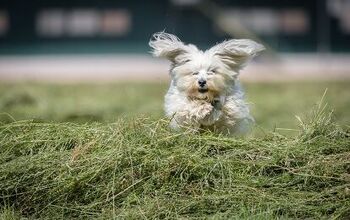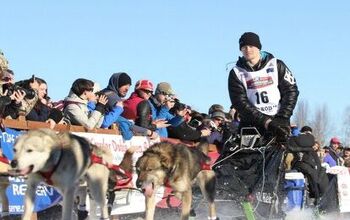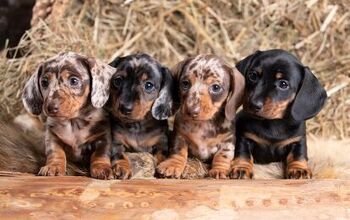7 Cool Facts About the Iditarod Race

The Iditarod Trail Sled Dog Race, also hailed as “the last great race,” is unlike any other. It’s held every year on the first Saturday of March in Anchorage, Alaska and ends in Nome, Alaska – that’s over 1,150 miles long! The race can last anywhere between eight to 10 days (although the longest any team took to complete the race was almost 33 days).
Oh, and did we mention it’s all about dogs?
The best mushers and their dogs brave Alaska’s bitter cold temperatures to take home the title. But we want to go beyond the basics of this amazing race, so we’ve compiled seven super cool (freezing, even!) facts about the Iditarod race.
1. The Red Lantern is awarded to the last team to finish the race
The Red Lantern tradition started back in 1953 from a different race called the Fur Rendezvous dogsled race in Anchorage, which was generally a three-day run. The tradition was passed along to the Iditarod race and given to the last team across the finish line. The red lantern refers to the lamp that is lit at the beginning of the race and is not extinguished until the last dog crosses the finish line. Talk about never giving up!
Related: How to Cheat Death When Kicksledding
2. To the winner go the spoils
No, these mushers aren’t there just for the fame and glory – they get a pretty big prize as well! Last year’s 1st prize was $70,000 and a new truck; 2014’s prize was just over $50,000, which is a bump of $20,000! We bet the teams keep up with the bumps for an even bigger cash pot this year.
3. Race times are twice as fast since it first started
When the Iditarod first started back in 1973, mushers and their dogs took an average 20 days to complete the race. Now, the average is anywhere between eight to 10 days – it’s almost been cut in half! Last year, history was made by a musher who set a world record for completing the race in eight days, 14 hours and 19 minutes.
Related: What’s the Difference Between a Kick Sled and a Dog Sled?
4. Iditarod race dogs need between 10,000 to 12,000 calories a day
These dogs are the ultimate work-out monsters. They run for hours a day and eat the best high-calorie foods in order to keep them in shape to run for days. When taking a short break, these dogs are fed frozen snacks like fish, meat or soaked dog food. At checkpoints, they are served a hot meal like beef slurry, Arctic char, vitamin supplements and kibble mixed with chicken fat and water. All of these are cooked in a bucket camp stove by the musher that also doubles as a seat when on the sled.
5. Dog booties are a must
Iditarod mushers are so dedicated to the race and their dogs that they will often hand-make their booties for the best protection possible. Not only is it a necessity to protect the dogs from the harsh Alaskan cold, but the padded booties also help protect dog paws from the ice, snow and rock-covered terrain. Mushers can go through a whopping 1,000 booties for a team of 16 dogs! The used booties are exchanged for fresh ones at several checkpoints throughout the race.
6. The Iditarod is a family affair
The Iditarod race has seen a few generations of the same family, and there are even some family members that race against one another! Take 2012’s winner Dallas Seavey – he became the youngest Iditarod winner at the young age of 23. One year later, his father Mitch Seavey became the oldest winner at 53 years young! And Mitch’s father, Dan, finished in third place back in 1973. Talk about inspiration! Other familiar accounts include Anna and Kristy Berington, twin sisters who competed in 2014, and the Mackeys, where father Dick and sons Lance and Rick each won the race on their sixth attempt while wearing lucky number 13.
7. Northern dog breeds only!
Not every dog is cut out for the Iditarod race. This rule was put into place back in early 1990, when a musher entered the race with standard European poodles on his dogsled team. Many of the poodles were dropped off at checkpoints because of matting problems and frozen paws. Only “Northern” pure-bred and mixed breed dogs (such as Siberian huskies and Alaskan malamutes) are allowed to race, as they have a natural fur coat that protects them from the sub-zero temperatures.

More by Diana Faria























